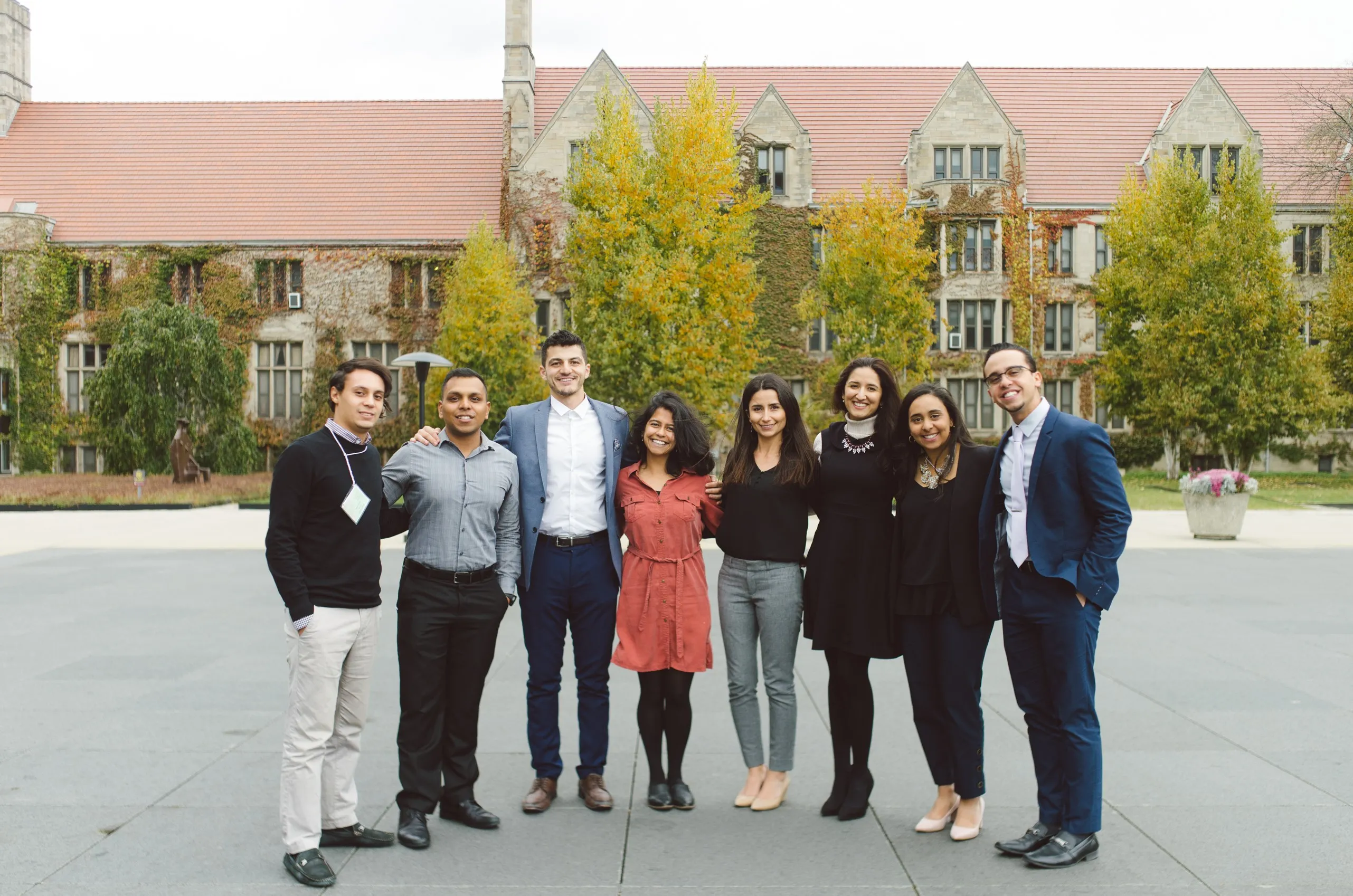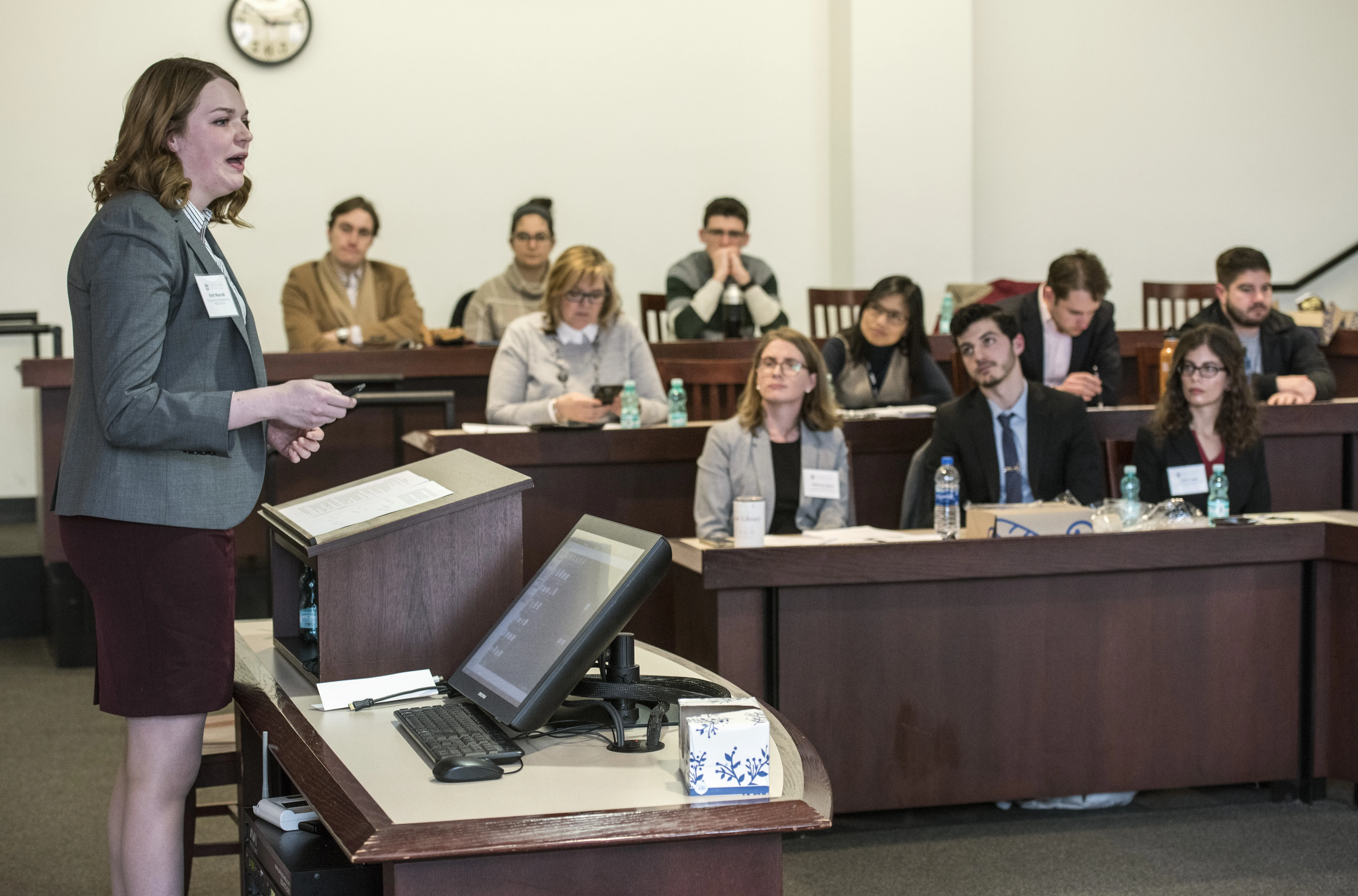The Wire: Ten Years Later

Police brutality, corruption, money in politics, a drug epidemic, and fake news—all topics that have consumed America’s attention in 2017—were important themes in The Wire, a show that aired its final episode nearly 10 years ago.
To mark this anniversary, legal scholars gathered earlier this month at The University of Chicago Legal Forum’s annual symposium to discuss The Wire’s continuing impact. What became apparent over the course of the day is that The Wire portrays real, ongoing problems that lawyers can play an important role in addressing.
“It was astounding and impressive how many different points of focus and perspectives presenters brought to the table,” said Jonathan Masur, the John P. Wilson Professor of Law and David and Celia Hilliard Research Scholar, who organized the conference with Richard McAdams, the Bernard D. Meltzer Professor of Law.
Irene Sullivan, editor-in-chief of the Legal Forum, said that “the symposium reflected how rich The Wire is. The many ways the panelists used The Wire to analyze social and legal issues demonstrated the show’s depth and continued relevance.”
John Bronsteen, professor of law at Loyola University of Chicago, opened the symposium by addressing one of the show’s major themes, the so-called “war on drugs” and the resulting spike in violence in Baltimore. In an effort to reduce that violence, one Baltimore officer in The Wire created a zone of the city called “Hamsterdam,” in which police guaranteed that they would not enforce drug laws. This approach produced the intended effect, but public pressure quickly forced the officers to shut the program down.
Bronsteen said that Hamsterdam’s fictional political failure mirrored the real-life failure of a similar program in Switzerland thirty years ago. He noted that the most direct methods of trying to reduce drug violence, such as legalization, may risk increasing drug use. However, he also pointed out that Portugal has combined decriminalization with mandatory rehabilitation so as to reduce rates of problematic drug use, and that this might be worth trying in the US.
While all the presenters said they were diehard fans of The Wire, several recognized that the show has some flaws. University of Illinois College of Law Professor Margareth Etienne’s presentation focused in part on the relative absence of female characters in the show, particularly in its fourth season covering education and schools. She argued that, as a result, viewers do not get a complete sense of the interplay between criminal justice and education policy with respect to the so-called “school-to-prison” pipeline and its impact on both young men and women.
According to Dan McAdams, the Henry Wade Rogers Professor of Psychology at Northwestern University (and no relation to Richard McAdams), “redemptive narratives” are quintessential American stories (think rags-to-riches, sin-to-salvation, sickness-to-health). Despite how much Americans cherish these stories, “most of the narratives portrayed in The Wire were not redemptive,” he said. As an example, McAdams noted how Russell “Stringer” Bell seemingly began on a redemptive path by transforming himself from a “violent drug lord into an earnest student and eventually a dapper businessman.” Despite those efforts, his story still ended in his murder. D’Angelo Barksdale had a similar fate, McAdams said. After reading The Great Gatsby with his prison reading group, D’Angelo muses that he thinks the book demonstrates that people can never change who they really are. Shortly thereafter, he is killed in the prison library for reasons related to his drug-dealing past.
Judge Rebecca Pallmeyer, who sits on the US District Court for the Northern District of Illinois, said that she sees redemptive narratives at work at sentencings and supervised release hearings. The happiest moments for her as a judge are when a defendant completes his term of supervised release and can begin his life anew, she said. While these moments have been rare in her career, the judge sees them as powerful examples of the criminal law’s redemptive quality. She pointed out, however, that “we don’t see much positive effect from criminal sentences in The Wire.” Avon Barksdale, for example, engineers an early release from prison and promptly returns to criminal activities. But, the judge noted, there is some hope: after release from a long sentence, Dennis “Cutty” Wise sets up a boxing gym for local street kids.
Bennett Capers, professor at Brooklyn Law School, said he appreciates The Wire for its realistic portrayal of police in urban America. “The line between the police and the policed is a thin one in The Wire,” he said. The Supreme Court, in his view, does not understand this. It “lives in an imaginary world when it comes to policing” by assuming the best in officers. In Caper’s view, The Wire offers an accurate counter-narrative to the justices’ portrayal of police in recent cases. Instead of seeking to promote law and order, officers in The Wire shout arbitrary orders at citizens and operate frequently out of self-interest.
Dozens of students were also in attendance at the symposium. Katie Kokkas,’19, a member of the Legal Forum staff, said her main takeaway from the day was that institutions in The Wire, just like institutions in real life, “seek self-perpetuation at the expense of achieving their own goals.”
For Richard McAdams, one of the most exciting parts of the day was David Simon’s video message to those in attendance. Shaking his head in disbelief, Simon, the creator of The Wire, exclaimed: “Ten years later, ten years later—don’t you lawyers have anything else to talk about?!”
The papers presented during the symposium will be published next year in Volume 2018 of the University of Chicago Legal Forum.



